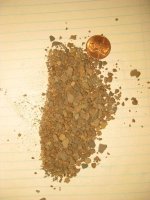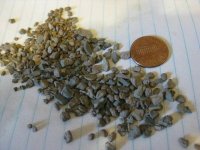
Perlite, chicken grit, sharp sand, builder's sand, vermiculite, turface, pumice, horticultural charcoal, axis, playball, napa 8822, charred rice hulls, lions, tigers,
OH MY!
It used to be those in the know were on the watch for good chunky perlite, because the fine crap from many stores did not perform nearly as well. The more traditional types stuck with less porous components like sharp sand.
Now, the choice of drainage/aeration components for container mixes has been expanded to include much more sophisticated materials that can provide enhanced durability, porosity, and some other qualities I hope we will read about in this thread.
My sense is that if you understand your "drainage" component and how it works, you are better prepared for whatever comes your way. It also lets you experiment. For instance, I just learned that in order to be effective, the particles have to be a large enough % of your mix so that they bump up against each other.
I don't claim to be one who knows, so I hope we hear from those who do. My 2 cents: calcined DE rocks!






